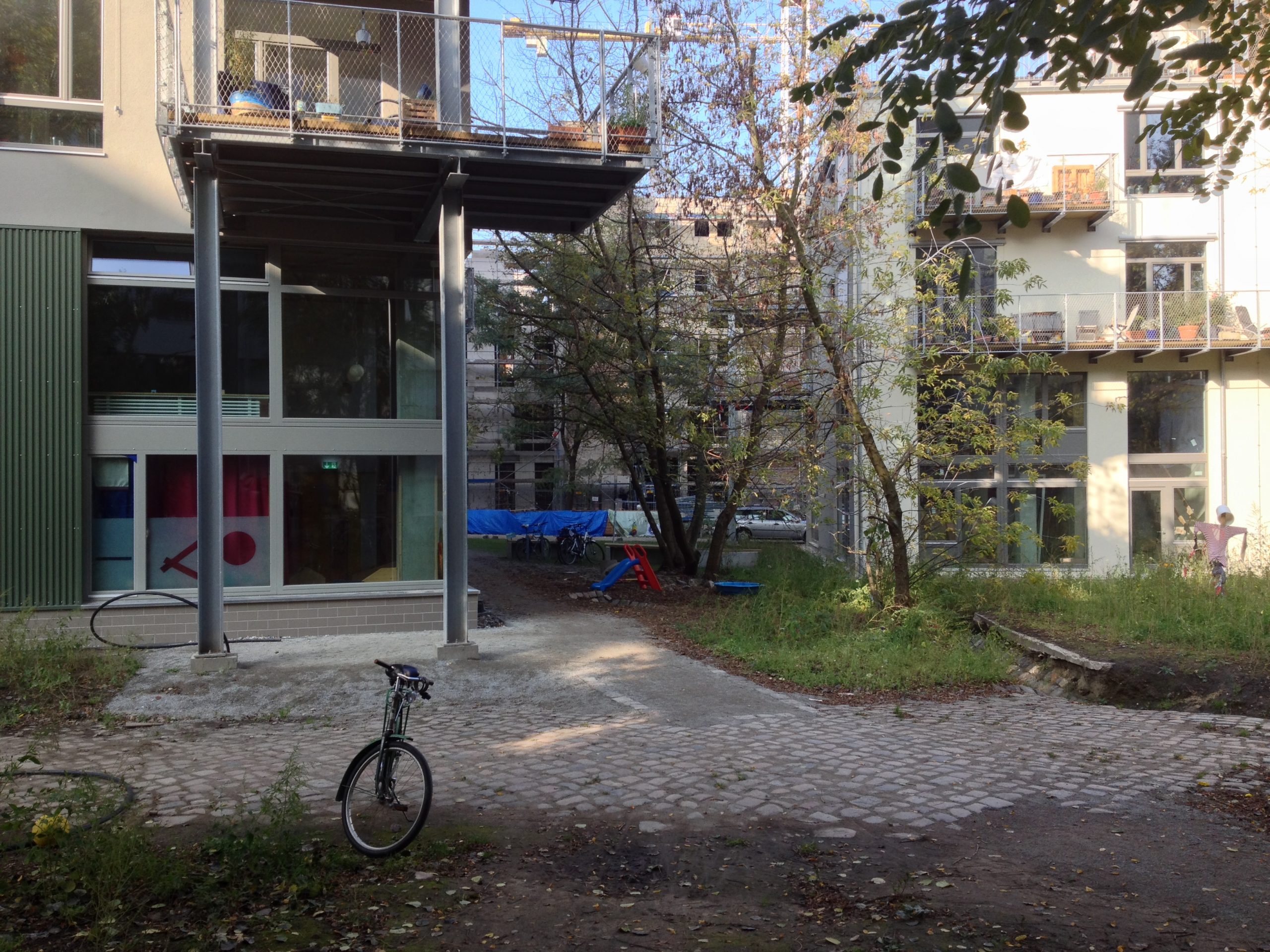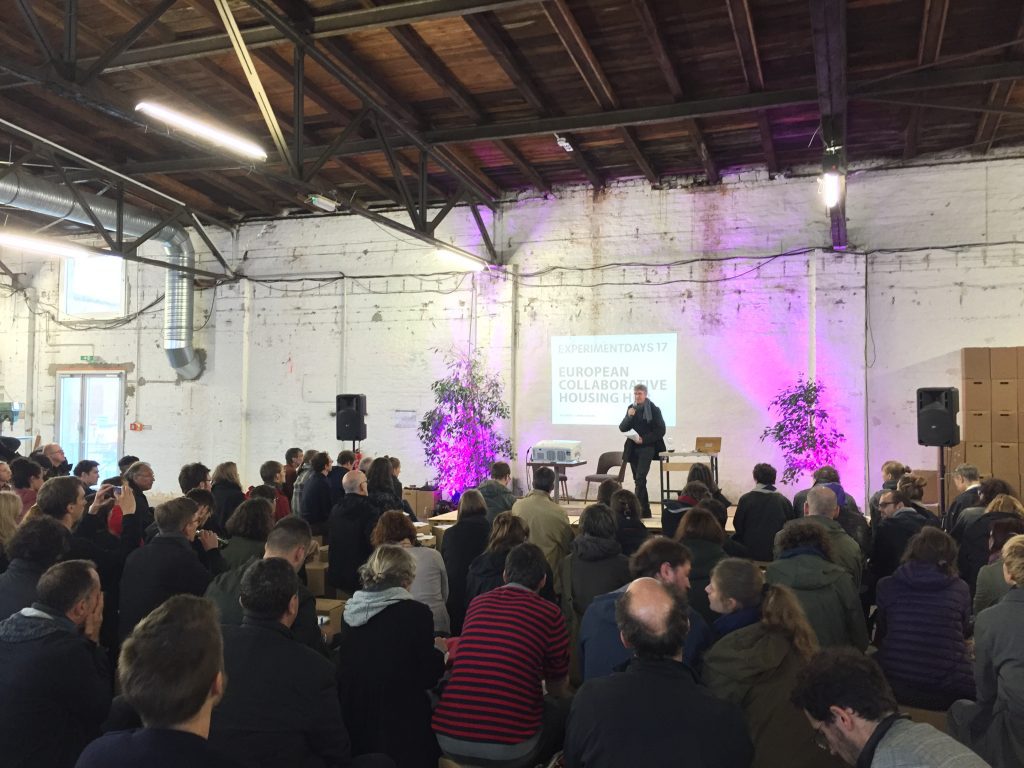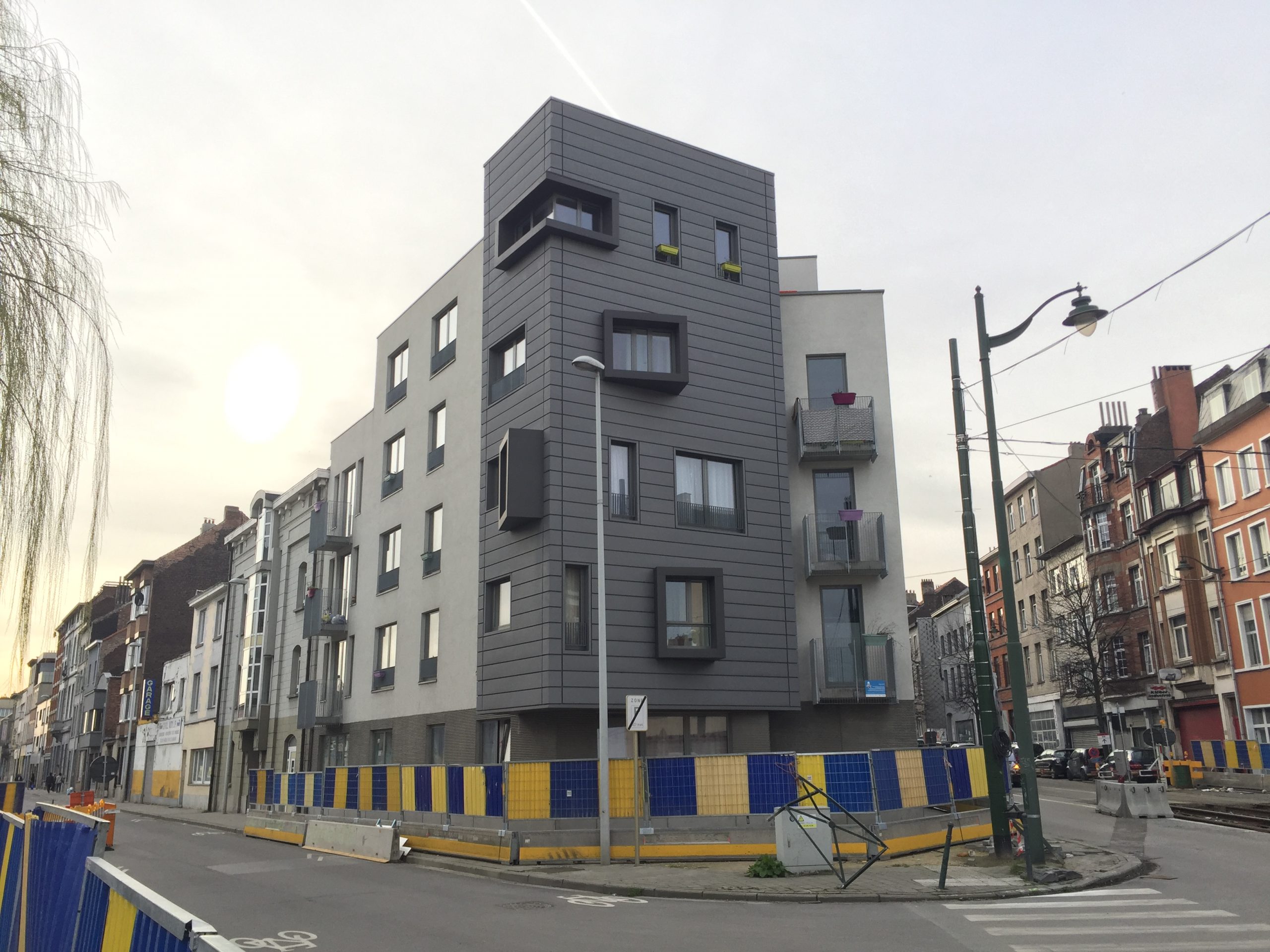Collaborative housing can be conceived as an approach to complement state- or municipality-led public housing schemes with bottom-up, self-organised housing projects. It has been the object of a great diversity of experiments throughout Europe, turning housing into a field of innovation when it comes to community engagement, social inclusion, solidarity economy, ethical finance and participatory design. This article, based on a webinar organised in the framework of the URBACT-UIA cooperation on the right to housing, describes some strategies and experiences in the field of collaborative housing.
By Laura Colini and Levente Polyak
In the past decade, many European cities have gone through different phases of a housing crisis. While the 2008 economic crisis brought a relative decline in housing prices, failing mortgage payments resulted in hundreds of thousands of foreclosures with many more families and individuals losing their homes on the continent. In the years following the outburst of the crisis, the booming real estate market, property speculation, mass tourism and golden visa regimes brought about rising housing prices and the removal of a significant proportion of housing units from the rental market.
Addressing this crisis, many municipalities, regional and national authorities as well as experts, activists and local communities have begun to reconsider public housing schemes and to develop instruments in order to enable the creation of alternative housing models that can better respond to the needs of diverse social groups. The right to housing, claimed by this coalition of actors, corresponds to a demand for “truly decent housing for all irrespective of one’s economic and social status.” (Madden and Marcuse, 2016)
While housing is not directly a competence of the European Union, there has been growing involvement from the side of European institutions and organisations in this endeavour. “Cities engaging in the right to housing” is an initiative by the URBACT and Urban Innovative Actions programmes to take the housing discussion to the European level, by bringing together municipalities, activists, academics and international organisations in series of in-depth discussions.
***
The first event of the series was dedicated to community-led housing. Widely seen as an approach to complement state- or municipality-led public housing schemes with bottom-up, self-organised housing projects, community-led housing is often referred to a by a variety of interrelated terms such as “collective self-organised,” “collaborative,” “resident-led,” “participative” or “co-“ housing (Czischke, 2018). Community-led housing goes beyond the provision of primary housing needs. As researcher Darinka Czischke describes, these types of housing are “defined by high degree of user participation, the establishment of reciprocal relationships, mutual help and solidarity,” thus potentially making them important sources of social cohesion in European cities (Czischke, 2018).

Community-led housing has been the object of a great diversity of experiments throughout Europe, turning housing into a field of innovation when it comes to community engagement, social inclusion, solidarity economy, ethical finance and participatory design. As explained by Darinka Czischke in the first “Cities engaging in the right to housing” webinar on 24 April 2020, collaborative housing has gone through a series of mutations in the past century. Collectively self-organised and self-managed housing emerged in the early 1900s as part of the broader cooperative movement, and different social and technological trends later added their marks to the quest for alternatives to public and free market-led housing. While the civil rights movement influenced the creation of the first Community Land Trusts (CLTs) in the late 1960s, the emancipatory movements of the 1970s contributed to the development of new forms of co-housing. The 2000s, with its global housing crisis gave birth to a new generation of housing activists who helped create the first Baugruppen, resident-led cooperatives, collective private commissioning projects and the first continental CLTs.
The motivations that drove activists towards new housing arrangements include longing for community life, affordability and social inclusion as well as agendas of gender, sustainability and demographic transition, Darinka Czischke explained in the webinar. These drivers led to a variety of collaborative housing forms that share collaboration, end-user participation and collective decision-making as common threads.
***
One of the most known collaborative housing forms is cooperative housing. Housing cooperatives have a long history in Europe. In Switzerland, for instance, they were first built in the early 1900s to support the country’s industrialisation with adequate housing. As explained by Andreas Wirz, board member of the Swiss Housing Cooperative Association, cooperative housing experienced a rebirth in the 1980s. After losing the enthusiasm of the earlier cooperative movements, new ideas of living together and the concept of the Wohngemeinschaft inspired a new generation of cooperatives. By now, cooperative housing in the cantons of Zurich and Biel amounts to almost a 20% market share. In Zurich, 25% of all rented flats are not-for-profit, and there are about 35,000 cooperative housing units.
Housing cooperatives are not only the most affordable way to live in Switzerland but they also offer a great diversity of typologies. By providing different sizes and floorplans, as well as shared facilities and arrangements for households of various sizes, cooperative housing projects respond better to individual needs and therefore use less space than other housing forms. The Swiss model, with its established ecosystem of cooperative housing, relies on strong cooperation with public actors. In Zurich, for instance, local and regional housing subsidies are complemented by federal mortgage guarantees and a central issue office for non-profit housing construction. In addition, the Swiss Housing Cooperatives Association helps new housing projects with revolving funds, solidarity funds and equity participation.
Fortunately, housing cooperatives are not limited to areas with long cooperative traditions. In Chemnitz, lead partner city of the URBACT project ALT/BAU, the first housing coops were built out of scratch. Volker Tzschucke, one of the founders of a pioneering housing cooperative Brühlpioniere explained at the webinar how an organically growing group of friends and acquaintances opened a new housing paradigm in the city with the help of a local cooperative bank that fully embraced the initiative. In a shrinking city like Chemnitz, the cooperative model can prove to be an important instrument for the community-led regeneration of empty buildings and flats.
***
Besides cooperative housing, another popular collaborative housing form is Community Land Trust (CLT). A key feature of CLTs as Arthur Cady of Community Land Trust Bruxelles explained at the webinar, is that they protect land and housing from real estate speculation. They do it by “acquiring land and leasing it with a long-term ground-lease to homeowners of the building sitting on the same land.” (Colini, 2018) With this mechanism, land is kept in a trust and only buildings are sold at fixed prices that are kept permanently affordable. CLTs, unlike other affordable home ownership programmes where public subsidies have to complete the price to be paid to buy or rent housing units, requires only one initial investment to buy land and erect the buildings.

Some CLTs have a strong focus on affordability and diversity: the CLTB, the first CLT in continental Europe, provides “affordable housing which prioritises access to homeownership for low- and moderate-income people.” (Colini, 2018) CLTB’s tenants are all eligible to social housing under regulations of the Brussels Region: this makes CLTB an officially recognised, legitimate social housing provider with regular subsidies from the Region. CLTB’s latest housing initiative, the UIA-funded project CALICO, currently under construction, includes a scheme for elderly residents with care facilities and services integrated in the housing project.
CLTs also claim to offer a chance to citizens to claim back their cities: CLTB, for instance, has a democratic governance system that includes not only public authorities and residents but also neighbours and civil society representatives. This allows the broader urban community to have a stake and a say in the development process. Community involvement efforts of the CLTB also include training people to manage co-ownership, creating community spaces to be used by local associations as well as making land available for local initiatives.
Emerged in the US in the late 1960s, CLTs have slowly spread to the UK and to different European countries in the past decades. Today Europe counts 109 CLTs in England and Wales, 22 in France (called Organismes de foncier solidaire), four in Belgium and many others in creation in Ireland, The Netherlands and Germany, some with the help of the SHICC project, led by Community Land Trust Bruxelles (CLTB).
Currently, the first German CLT is in conception in Berlin, a city that is already home to over 500 cohousing projects but where land has been virtually inaccessible in the past five years. As Michael LaFond, founder of the Institute for Creative Sustainability and the cohousing-berlin.de database explained at the webinar, CLTs here offer a learning process that brings the experience of cohousing and cooperative housing projects to another level.
The Berlin CLT – called Stadtbodenstiftung – will be a “citizens’ foundation,” a democratically controlled local organisation with the direct participation of residents, the neighbourhood, donors, public bodies as well as experts. More than single housing projects, the Berlin CLT will thus allow housing activists to build a more coherent policy framework, closer cooperation with the local government, broader democratic decision-making structures and a more solid, long-term perspective for collaborative housing in the city.
***
While cooperative housing and Community Land Trusts lead the way among new forms of collaborative housing, other forms of co-housing have also been tested in less favourable institutional settings. In a context with little tradition of public-civic cooperation and a rapidly shrinking public housing sector, the Budapest district of Zugló has been engaged in creating a new, environmentally sustainable living community. Zugló’s ambition with developing the UIA-funded E-CO-HOUSING project, as explained by Rebeka Szabó, the district’s deputy mayor, is to create a prototype for an economically feasible and environmentally sustainable social housing scheme that can be replicated at the local level, in lack of state response to the housing crisis. In cooperation with green technology companies, environmental and social NGOs and a university, the district municipality has engaged a focus group to co-design a housing block with community spaces, shared facilities and smart technology solutions, allowing future residents to monitor their energy consumption.
***
The panorama provided by the webinar “Cities engaging in the right to housing” helps us understand the common points of collaborative housing, underlining the importance of partnerships, participation, governance, diversity, non-profit operation and long-term affordability.

While collaborative housing cannot solve all the housing challenges of Europe, it can be part of the solution. In order to integrate collaborative housing into the broader social housing provision, as Darinka Czischke suggests, partnerships are needed with municipalities, regional authorities, federal governments and housing associations as well as with banks, planners, architects and developers. With the help of these partnerships, the relevant policy, legal and financial frameworks can be adapted to the specific needs of collective self-provision.
Collaborative housing is based on participation: even the term emphasises “a focus on working together.” Other terms like community housing “clearly put the residents and the community in front, as a driving force for housing development.” (LaFond and Tsvetkova 2017) In reality, this signals a shift from participation to co-production, that includes both co-designing the architectural and governance structure of a future housing project as well as co-managing the daily life of the realised project.
Governance is also at the core of collaborative housing projects: most initiatives operate with specifically designed, collectively accepted governing principles that balance individual desires with collective needs. While CLTs include neighbours, civil society representatives and public actors in their decision-making process, housing cooperatives are designed to follow “the principle of ‘one member, one vote’, so control is allocated evenly among the users of the co-op without regard to how much money is each has invested.” (Lund 2013)
A key dilemma of all community-led housing projects is diversity, corresponding to an ambition of these new housing initiatives to provide affordable, accessible and inclusive housing units. Besides selection criteria and mechanisms to ensure diversity among tenants, housing projects can also contribute to “the mixed fabric of self-help, civic engagement and neighbourliness (…) through the small-scale provision of non-residential spaces (neighbourhood cafés, rooms for social agencies, small commercial spaces, etc.).” (LaFond and Tsvetkova 2017)
Cooperatives and community land trusts are all not-for-profit: their aim is to eliminate private profit from housing projects. While “profit-making is prohibited by the articles” o cooperatives (Drescher and Schöningh, 2014), CLTs also operate with mechanisms that exclude private profit from the purchase and resale of properties.
The elimination of private profit from housing development is a key factor for long-term affordability. As “real estate transactions have been and will remain mainly a business of land purchases of land sales,” (Kriese 2017) a common element in most community-led housing is the ambition to take properties out of the speculative market. Blocking speculation is done by ”freezing the value of properties” like in the case of CLTs (Colini, 2018), or by considering ground as a common good, “meaning that the community, not the individual, is entitled to the ground rent.” (Kriese 2017)
This is the first version of an article later re-edited and published in the frame of the URBACT – UIA cooperation on the right to housing.
By Laura Colini and Levente Polyak
References
Colini, L. (2018) The ‘CALICO’ project, Journal nr. 1. https://www.uia-initiative.eu/sites/default/files/2020-08/224846_KURTH_02_-_BRUSSELS_CALICO_JOURNAL_1.pdf
Czischke, D. (2018) Collaborative housing and housing providers: towards an analytical framework of multi-stakeholder collaboration in housing co-production, International Journal of Housing Policy, 18:1, 55-81
Drescher, A. and Schöningh, Ch. (2014) Cooperative models. In: Dörner, K., Drexler, H. and Schultz-Granberg, J. (eds.) Affordable Living
Kriese, U. (2017) Tension between costs of homes and land. In: LaFond, M. and Tsvetkova, L. (eds.) CoHousing Inclusive. Self-organized, community-led housing for all. Berlin: Jovis
LaFond, M. and Tsvetkova, L. (eds.) CoHousing Inclusive. Self-organized, community-led housing for all. Berlin: Jovis
Madden, D. and Marcuse, P. (2016). In Defense of Housing. London: Verso Books

